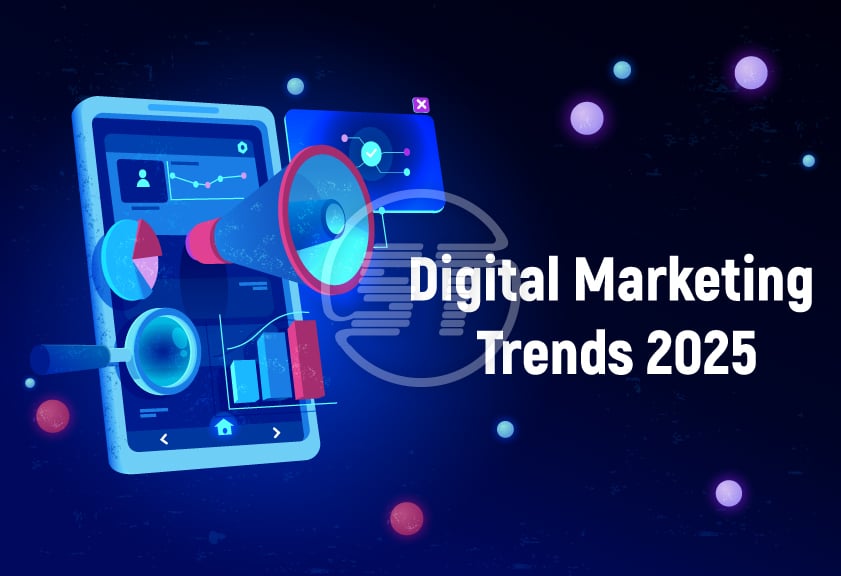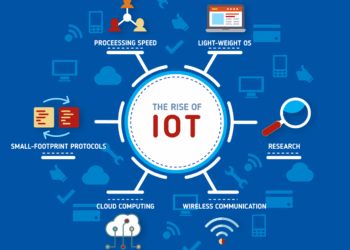Navigating the Dynamic Realm of Digital Marketing
The sphere of digital marketing stands as a perpetually transforming entity, propelled by the relentless march of technological innovation, the ever-shifting patterns of consumer behavior, and the unceasing quest for more impactful strategies to connect with target audiences. In our contemporary, interconnected global landscape, businesses find themselves in a competitive arena that extends beyond the mere quality of their offerings. Success now hinges significantly on their adeptness at cultivating meaningful and enduring relationships with their clientele within the digital domain. This imperative demands a profound comprehension of the prevailing digital marketing trends and a nimble capacity to adapt to their continuous evolution. Failure to maintain this vigilance and adaptability can lead to missed opportunities for growth, diminished online visibility, and ultimately, a contraction of market presence. This exhaustive exploration seeks to dissect the pivotal digital marketing trends that are currently redefining the contours of consumer engagement. It will provide an in-depth analysis of their ramifications for businesses and offer actionable insights for those aspiring to flourish in the digital epoch. By understanding and strategically implementing these trends, businesses can enhance their online presence, attract and retain customers, and ultimately drive revenue growth, contributing to greater success in the competitive digital marketplace and potentially increasing revenue streams through avenues like Google AdSense on their content platforms.
The Paramountcy of Tailored Marketing Experiences
In an era characterized by an overwhelming deluge of information, today’s consumers exhibit an increasing demand for marketing interactions that are specifically tailored to their individual needs, preferences, and prior engagements. The era of broad, undifferentiated marketing campaigns is waning in effectiveness as audiences become more sophisticated in their consumption habits, exhibiting greater selectivity regarding the content they engage with and the brands they choose to interact with. Personalized marketing leverages the power of meticulous data analytics, the sophisticated capabilities of artificial intelligence (AI), and the efficiency of automation technologies to deliver bespoke messages, exclusive offers, and highly relevant content to precisely defined audience segments or even individual consumers. This nuanced approach cultivates a heightened sense of relevance and personal connection, which in turn fosters elevated levels of engagement, strengthens customer loyalty over time, and unlocks enhanced opportunities for conversion throughout the customer journey.
Harnessing Data for Hyper-Personalization
The bedrock of truly effective personalized marketing initiatives lies in the systematic collection, rigorous analysis, and insightful interpretation of substantial volumes of data. This rich data tapestry can encompass a wide array of information, including demographic profiles, detailed browsing histories, comprehensive purchase patterns, dynamic social media activity, and much more. By strategically employing advanced data analytics tools and techniques, businesses can unlock a deeper, more granular understanding of their customers’ intrinsic preferences, behavioral patterns, and specific pain points. This refined level of insight empowers marketers to craft highly targeted campaigns that resonate authentically and powerfully with precisely defined audience segments, thereby maximizing the impact of their marketing expenditures and enhancing the likelihood of positive customer response and conversion.
The Synergistic Role of AI in Personalization at Scale
Artificial intelligence emerges as a pivotal force in the realm of personalized marketing, providing the scalability and optimization necessary to deliver truly individualized experiences across vast customer bases. Sophisticated AI algorithms possess the capacity to analyze extensive datasets in real-time, discern intricate patterns and emerging trends, and autonomously execute the delivery of personalized content and tailored recommendations. This encompasses dynamic content adaptation on websites, the orchestration of hyper-personalized email marketing sequences, and the deployment of AI-powered chatbots capable of providing nuanced and contextually relevant customer support interactions. By leveraging AI, businesses can move beyond basic segmentation to deliver truly one-to-one marketing experiences that feel inherently relevant and valuable to each individual customer, fostering stronger relationships and driving improved marketing outcomes.
Prioritizing Privacy and Cultivating Transparency
As the sophistication of personalization techniques advances, it becomes increasingly imperative for businesses to place a premium on the principles of data privacy and operational transparency. Contemporary consumers are exhibiting a growing awareness and concern regarding the methods by which their personal data is being collected, processed, and utilized. Furthermore, regulatory frameworks such as the General Data Protection Regulation (GDPR) and the California Consumer Privacy Act (CCPA) are enforcing increasingly stringent guidelines concerning data handling practices. Cultivating trust through the implementation of transparent data policies and empowering consumers with meaningful control over their personal information are not merely matters of compliance but are fundamental to fostering enduring customer relationships and ensuring long-term success in the domain of personalized marketing. Businesses that prioritize ethical data handling will be better positioned to build and maintain customer confidence, a crucial element in driving sustained engagement and loyalty.
The Undeniable Power of Video-Centric Marketing
Visual content has consistently demonstrated a superior capacity for engagement and memorability when compared to its text-based counterparts. Video marketing, in particular, has experienced an exponential surge in popularity in recent years, solidifying its position as an indispensable component of any comprehensive digital marketing strategy. Videos possess a unique ability to effectively convey intricate information, evoke a wide spectrum of emotions, and cultivate a more human and relatable connection with the intended audience. Ranging from concise, attention-grabbing short-form videos disseminated across social media platforms to more extensive, in-depth educational content hosted on websites and platforms like YouTube, video marketing offers a versatile array of formats to engage consumers at various junctures along their customer journey. This adaptability allows businesses to leverage video for brand building, product demonstrations, customer testimonials, and a multitude of other marketing objectives, making it a cornerstone of modern digital engagement strategies.
The Ascendancy of Short-Form Video Platforms
Platforms such as TikTok and Instagram Reels have fundamentally reshaped the landscape of how consumers discover and consume video content in the digital age. Their inherently short-form, highly engaging format has captivated the attention of vast audiences, particularly within younger demographic segments. Businesses are increasingly recognizing the immense potential of these platforms, strategically leveraging them to create concise, visually compelling video content designed to capture attention swiftly and effectively, thereby driving heightened levels of brand awareness and fostering organic engagement within these dynamic social ecosystems. The ephemeral and rapidly evolving nature of short-form video necessitates a creative and agile approach to content creation, focusing on trends, challenges, and authentic storytelling to resonate with platform users.
The Impact of Live Video Streaming for Real-Time Interaction
Live video streaming has emerged as a potent tool for facilitating real-time engagement and fostering a sense of immediacy and authenticity in brand-consumer interactions. Platforms such as Facebook Live, Instagram Live, and YouTube Live empower businesses to connect directly with their audience in real-time, offering opportunities to host interactive question-and-answer sessions, conduct live product demonstrations that showcase functionality and benefits, and provide exclusive behind-the-scenes glimpses into their operations and culture. This direct and unscripted form of communication cultivates a stronger sense of community around the brand and enhances the perception of authenticity, thereby strengthening the emotional bond between brands and their consumers. Live video can also be leveraged for time-sensitive announcements, special promotions, and interactive events, creating a dynamic and engaging experience that can drive immediate action and build lasting relationships.
Strategic Integration of Video Across the Sales Funnel
Video content possesses a remarkable versatility that allows for its effective integration across every stage of the customer journey, from the initial phase of attracting awareness and generating interest to the critical stages of driving conversions and ultimately fostering enduring customer loyalty. For instance, concise explainer videos can effectively educate potential customers about the unique benefits and value propositions of a product or service. Engaging product demonstration videos can visually showcase the functionality and practical applications of offerings, providing a more compelling understanding than static images or text alone. Furthermore, authentic customer testimonial videos can serve as powerful social proof, building trust and credibility by featuring the positive experiences of satisfied customers. By strategically deploying different types of video content at each stage of the sales funnel, businesses can enhance engagement, address customer queries, and ultimately drive more informed and confident purchasing decisions.
The Growing Influence of Influencer Marketing
Influencer marketing has transitioned from a relatively niche tactic to a mainstream and increasingly sophisticated strategy employed by brands seeking to effectively reach and engage with specific, well-defined target audiences. Influencers, individuals who have cultivated a substantial following and established credibility within a particular niche or industry, possess the unique ability to promote products or services authentically to their engaged communities. Their endorsements and recommendations often carry a greater weight and perceived trustworthiness among their followers compared to traditional forms of advertising, leading to higher levels of trust, increased engagement, and ultimately, a more positive impact on brand perception and purchase intent. The effectiveness of influencer marketing lies in the influencer’s ability to connect with their audience on a personal level, making their recommendations feel more genuine and relatable.
Strategic Identification of Ideal Influencer Partners
The ultimate success of any influencer marketing initiative is intrinsically linked to the careful and strategic selection of influencer partners. It is paramount for businesses to collaborate with individuals whose audience demographics, interests, and values closely align with the brand’s target market and whose personal brand and content resonate authentically with the brand’s identity and messaging. Authenticity and relevance are not merely desirable attributes but are critical prerequisites for forging credible and impactful influencer partnerships that yield genuine engagement and positive outcomes. A mismatch between the influencer’s audience or values and the brand can lead to inauthentic endorsements that are perceived negatively by consumers, potentially damaging brand credibility. Therefore, thorough due diligence in identifying and vetting potential influencer partners is essential for maximizing the return on investment and ensuring the integrity of the brand.
Diverse Modalities of Influencer Collaboration
Influencer collaborations can manifest in a multitude of diverse forms, each offering unique avenues for brand promotion and audience engagement. These can include sponsored posts, where influencers create content specifically highlighting a brand’s product or service; product reviews, offering their honest opinions and experiences; social media takeovers, granting the brand temporary access to the influencer’s platform; affiliate marketing, where influencers earn a commission on sales generated through their unique links; and the co-creation of content, involving collaborative development of posts, videos, or other media. The most efficacious approach for a given brand will depend on a confluence of factors, including the brand’s specific marketing objectives, the characteristics and preferences of the influencer’s audience, and the influencer’s unique content style and engagement patterns. A well-considered and tailored approach to collaboration is key to maximizing the impact and authenticity of the influencer partnership.
Rigorous Measurement of Influencer Marketing Impact
Accurately measuring the return on investment (ROI) of influencer marketing campaigns is not merely a matter of accountability but is also essential for justifying marketing expenditures and strategically optimizing future influencer engagement strategies. To effectively assess the impact of these campaigns, businesses need to track a range of key performance indicators (KPIs). These metrics can include the overall reach of the campaign (the number of unique individuals exposed to the content), the level of engagement generated (likes, comments, shares, and other forms of interaction), the resulting website traffic driven by the influencer’s content, the number of leads generated through influencer efforts, and, ultimately, the tangible sales conversions that can be attributed to the campaign. By diligently monitoring these metrics, businesses can gain valuable insights into the effectiveness of their influencer partnerships and make data-driven decisions to refine their strategies for optimal results.
The Expanding Realm of Social Commerce Integration
Social commerce, which entails the seamless integration of e-commerce functionalities directly within the familiar environments of social media platforms, is fundamentally transforming the way consumers discover, evaluate, and ultimately purchase products online. By enabling frictionless shopping experiences that allow users to complete transactions without ever having to leave their preferred social media applications, businesses can effectively capitalize on the inherent immediacy, convenience, and social context that these platforms offer. This convergence of social interaction and transactional capability represents a significant evolution in the digital retail landscape, offering new avenues for customer acquisition and sales generation.
Direct Purchase Capabilities on Social Platforms
Leading social media platforms, including Instagram, Facebook, and Pinterest, have now integrated sophisticated features that empower users to browse product catalogs, view detailed product information, and complete purchase transactions without ever navigating away from the app environment. This streamlined shopping experience significantly reduces friction in the purchasing process, eliminating the need for users to navigate to external websites and re-enter payment or shipping information. This enhanced convenience can lead to increased impulse purchases and a higher conversion rate from product discovery to final sale, as the path to purchase is significantly shortened and simplified within the familiar social media context.
The Emergence of Live Shopping Experiences
Live shopping events, which strategically combine the engaging format of live video streaming with real-time purchasing opportunities, are rapidly gaining traction and popularity among both brands and consumers. These interactive and dynamic sessions allow businesses to showcase their products in real-time, conduct engaging demonstrations, answer customer questions directly and immediately, and drive sales through limited-time offers and exclusive promotions. The interactive nature of live shopping fosters a sense of community and urgency, creating a more engaging and persuasive shopping environment compared to traditional e-commerce experiences. This format leverages the power of visual demonstration and real-time interaction to build trust, address concerns, and ultimately encourage immediate purchasing decisions.
The Converging Landscape of Social and E-commerce
The traditional boundaries that once demarcated social media and e-commerce are becoming increasingly blurred, giving rise to a synergistic landscape that presents novel and exciting opportunities for brands to connect with consumers and effectively drive sales. Practices such as social listening, which involves actively monitoring social media conversations for brand mentions and customer feedback, are becoming integral to customer service strategies. Providing customer support directly through social media channels offers convenience and immediacy that enhances customer satisfaction. Furthermore, the use of social data to generate personalized product recommendations within e-commerce environments creates more relevant and engaging shopping experiences. This convergence is fostering a more integrated and customer-centric approach to online retail, where social interaction and transactional capabilities are seamlessly intertwined.
Exploring the Metaverse and Immersive Brand Experiences
The metaverse, envisioned as an expansive and interconnected network of persistent virtual worlds, is rapidly emerging as a novel and potentially transformative frontier for digital marketing innovation. While still in its nascent stages of development and widespread adoption, the metaverse harbors immense potential for the creation of deeply immersive and highly interactive brand experiences that transcend the limitations of traditional digital communication channels. This evolving digital realm offers opportunities for brands to engage with consumers in entirely new and compelling ways, fostering deeper connections and creating memorable interactions within shared virtual spaces.
The Role of Virtual Reality (VR) and Augmented Reality (AR)
Virtual Reality (VR) and Augmented Reality (AR) technologies are playing a pivotal and foundational role in shaping the nascent experiences within the metaverse. VR offers users fully immersive and interactive virtual environments that can transport them to entirely new digital realms. In contrast, AR strategically overlays digital content, information, and interactive elements onto the user’s perception of the real world, seamlessly blending the physical and the digital. These powerful technologies can be creatively leveraged for a wide range of marketing applications, including virtual product try-ons that allow consumers to visualize how products might look in their own environment, immersive brand storytelling experiences that captivate and engage audiences on a deeper level, virtual events and product launches that reach a global audience, and much more. As these technologies continue to advance and become more accessible, their potential to revolutionize consumer engagement within the metaverse will only continue to grow.
Establishing Brand Presence in Virtual Worlds
As the metaverse continues its evolution and gains broader adoption, forward-thinking brands are beginning to strategically establish a presence within these burgeoning virtual worlds. This proactive engagement can take various forms, such as creating branded virtual storefronts that offer unique digital experiences, hosting virtual events and interactive experiences that allow for direct engagement with consumers in a novel setting, and even offering virtual goods and services that cater to the unique needs and desires of metaverse users. By establishing an early foothold in these virtual environments, brands can tap into new and potentially large audiences, cultivate innovative forms of brand interaction, and create memorable and differentiated brand experiences that resonate with the evolving digital landscape. This early adoption can provide a significant competitive advantage as the metaverse continues to mature and attract a larger user base.
The Future Trajectory of Immersive Marketing
The metaverse and the suite of immersive technologies that underpin it are poised to fundamentally revolutionize the landscape of digital marketing by offering unprecedented levels of engagement, interactivity, and sensory experience. As these technologies continue to mature, become more readily accessible to consumers, and offer increasingly sophisticated capabilities, businesses that strategically embrace and integrate them into their marketing strategies early on stand to gain a significant competitive advantage. The ability to create truly immersive and interactive brand experiences within virtual environments opens up entirely new avenues for storytelling, product demonstration, customer interaction, and brand building, potentially forging deeper and more meaningful connections with consumers in the digital age. As the metaverse evolves, marketers will need to adapt their strategies and explore the unique opportunities presented by these immersive platforms to stay ahead of the curve and effectively engage with their target audiences in these new digital frontiers.
The Enduring and Evolving Importance of Search Engine Optimization (SEO)
While the digital marketing landscape continues to be enriched by the emergence of novel trends and innovative strategies, Search Engine Optimization (SEO) remains a foundational and indispensable pillar for achieving online visibility, attracting organic traffic, and effectively acquiring new customers. However, it is crucial to recognize that SEO is not a static discipline; rather, it is a dynamic and ever-evolving field that continuously adapts in response to ongoing changes in search engine algorithms, shifts in user search behavior, and the relentless advancements in web technologies. To maintain a strong online presence and effectively reach target audiences, businesses must remain vigilant and adaptable to these ongoing changes in the SEO landscape.
The Foundational Role of High-Quality, Relevant Content
In the contemporary SEO landscape, the creation and dissemination of high-quality, genuinely relevant, and consistently engaging content has ascended to a position of paramount importance. Search engines, in their ongoing efforts to provide users with the most valuable and authoritative information, increasingly prioritize websites that offer comprehensive, well-researched content that directly addresses user search queries and provides a positive and informative user experience. Content should be meticulously researched, presented in a clear and structured manner, and strategically optimized with relevant keywords to enhance its visibility to search engines and, more importantly, to provide genuine value to the target audience. Websites that consistently deliver such high-quality content are more likely to achieve higher rankings, attract more organic traffic, and establish themselves as trusted resources within their respective industries.
The Critical Significance of User Experience (UX)
Search engines are increasingly incorporating user experience (UX) factors as key determinants in their website ranking algorithms. This signifies a growing recognition of the importance of providing users with not only relevant content but also a seamless and enjoyable browsing experience. Key UX elements that influence search engine rankings include website loading speed, mobile-friendliness and responsiveness across various devices, the intuitiveness and ease of website navigation, and the overall design and visual appeal of the site. Websites that offer a positive user experience tend to exhibit lower bounce rates (the percentage of visitors who leave after viewing only one page), higher dwell times (the amount of time users spend on a page), and improved engagement metrics, all of which signal to search engines that the website is providing value to its visitors. Therefore, optimizing for UX is not only crucial for improving search engine rankings but also for enhancing user satisfaction and ultimately














